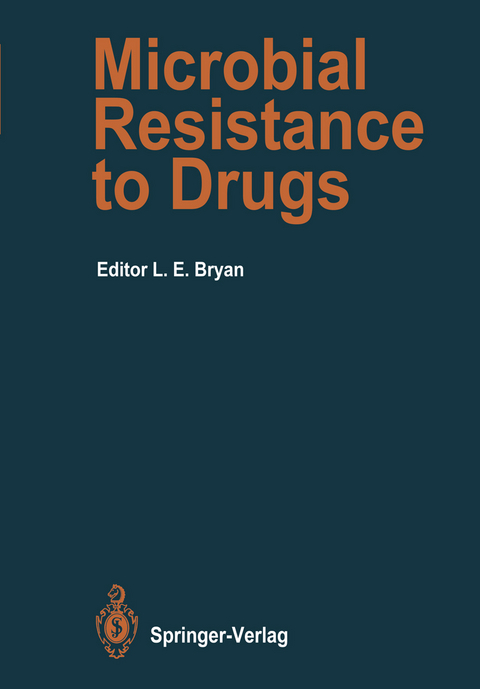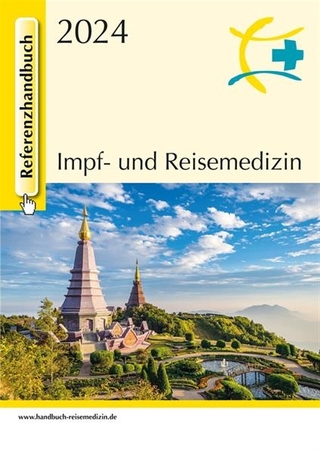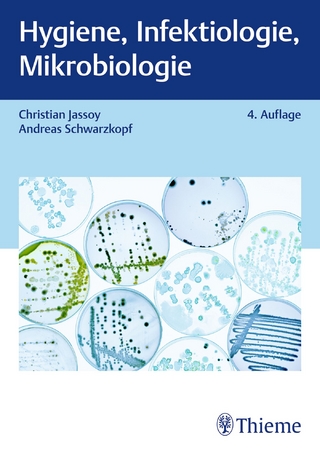
Microbial Resistance to Drugs
Springer Berlin (Verlag)
978-3-642-74097-8 (ISBN)
Most often when the subject of antimicrobial resistance is discussed, the organizational emphasis is on individual antimicrobial agents or groups of agents. Thus we tend to see discussion of resistance to f3-lactams, tetracyclines, amino glycosides etc. In this book many of the authors were asked to emphasize the mechanism of resistance in their discussion and from that to show how susceptibility to various agents was affected. In part this was done to help emphasize the enormous contribution that the study of antimicrobial resistance has made to our understanding of fundamental physiologic and genetic processes in bacteria. When one looks back over the study of antimicrobial resistance, it is clear that it has been the birthplace of many fundamental advances in molecular biology and of an appreciation of the role of many key functions in the life of a bacterium. In addition, and hopefully to an increasing extent in the future, such study has also contributed to advances in antimicrobial chemotherapy. Through out the book resistance mechanisms have been placed in perspective as to their significance as causes of resistance to key drugs or groups of drugs. Some are of much greater significance than others in terms of the prevalence or the degree of resistance produced. Whatever their numerical significance, however, each of the mechanisms, without question, throws light on fundamental cellular processes and the way in which they interact with antimicrobial agents.
1 Role of the Outer Membrane of Gram-Negative Bacteria in Antimicrobial Resistance.- A. Introduction.- B. The Outer Membrane Barrier.- C. The Measurement of Outer Membrane Permeability.- D. Permeability of Bacterial Outer Membranes to ?-Lactam Antibiotics.- E. Permeation of Some Other Agents Through Porin Channels.- F. Contribution of Non-porin Pathways.- G. Outer Membrane Permeability to Polycationic Agents.- H. Conclusions.- References.- 2 Cytoplasmic Membrane Transport and Antimicrobial Resistance.- A. Summary of Transport Systems.- B. Antimicrobial Resistance Associated with Antimicrobial Transport.- References.- 3 Susceptibility and Resistance of Plasmodium falciparum to Chloroquine.- A. Introduction.- B. Mechanism of Chloroquine Action.- C. Mechanism of Chloroquine Resistance.- D. Action of Mefloquine, Quinine, and Quinidine.- E. Summary of Basic Concepts and Prospects for the Future.- References.- 4 Resistance to ?-Lactam Antibiotics Mediated by Alterations of Penicillin-Binding Proteins.- A. Introduction.- B. Mechanisms of Resistance to ?-Lactam Antibiotics.- C. Classification of PBP Alterations in ?-Lactam-Resistant Strains.- D. Laboratory Studies on the Development of ?-Lactam-Resistant PBPs in E. coli.- E. PBP Alterations in Clinical Isolates.- F. Concluding Remarks.- References.- 5 Plasmid-Determined Beta-Lactamases.- A. Introduction.- B. General Properties of Beta-Lactamases.- C. Classification of Beta-Lactamases.- D. Properties of Plasmid-Determined Beta-Lactamases.- E. Relatedness of Plasmid-Determined Beta-Lactamases.- F. Spread of Plasmid-Deter mined Beta-Lactamases in Patient Flora.- G. Contribution of Plasmid-Determined Beta-Lactamases to Beta-Lactam Antibiotic Resistance.- References.- 6 The Chromosomal Beta-Lactamases.- A. Introduction.- B.General Characteristics.- C. Cephalosporinases.- D. Oxyiminocephalosporinases.- E. Penicillinases.- F. Broad-Spectrum Beta-Lactamases.- G. Subclassification Scheme for Chromosomal Beta-Lactamases.- References.- 7 Beta-Lactamases: Genetic Control.- A. Introduction.- B. Classification of Beta-Lactamases.- C. Regulation of Class A Enzymes.- D. Regulation of Class C Enzymes.- E. Conclusion.- References.- 8 Resistance to Quinolones and Fluoroquinolones.- A. Introduction.- B. Mechanism of Action.- C. Mechanisms of Resistance.- D. Clinical Implications of Resistance Mechanisms.- E. Summary and Conclusions.- References.- 9 Ribosomal Changes Resulting in Antimicrobial Resistance.- A. Introduction.- B. Changes in Ribosomal Proteins.- C. Changes in Ribosomal RNA Which Result in Antimicrobial Resistance.- D. Antibiotics and Phylogeny.- E. Ribosomal Antibiotic Resistance in Clinical Isolates.- F. Conclusions and Perspectives.- References.- 10 Methylation of RNA and Resistance to Antibiotics.- A. Introduction.- B. Resistance Due to Target Site Modification.- C. Concluding Remarks.- References.- 11 Resistance to Trimethoprim.- A. Introduction.- B. Mechanisms of Resistance.- C. Epidemiology of Trimethoprim Resistance.- D. Mechanism and Epidemiology of Trimethoprim Resistance in Gram-Positive Organisms.- E. Conclusion.- References.- 12 Resistance to Sulfonamides.- A. Introduction.- B. Sulfonamide Usage Today.- C. Prevalence of Sulfonamide Resistance.- D. Mode of Action of Sulfonamides.- E. Mechanisms of Sulfonamide Resistance.- F. Genetics of Sulfonamide Resistance.- References.- 13 Chloramphenicol Acetyltransferases.- A. Chloramphenicol Resistance: General Aspects.- B. Enzymology of Chloramphenicol-Acetylation.- C. Control of Expression of Chloramphenicol Acetyltransferases.- References.- 14 General Properties of Resistance Plasmids.- A. Introduction.- B. Plasmid Classification.- C. Structure of Plasmids.- D. Plasmid Transfer.- E. Plasmid Maintenance and Replication.- F. Antibiotic Resistance and Other Plasmid-Encoded Properties.- G. Conclusions and Directions for Future Studies.- References.- 15 Clinical Laboratory Testing for Antimicrobial Resistance.- A. Introduction.- B. Standardization of Test Procedures.- C. Relevance of Testing and Clinical Laboratory Correlation.- D. DNA Probes for AST.- E. Conclusions.- References.- 16 The Molecular Epidemiology of Antimicrobial Resistance.- A. Introduction.- B. Plasmids as Strain Markers.- C. Epidemic Plasmids.- D. Endemic Antibiotic Resistance.- References.- 17 Microbial Persistence or Phenotypic Adaptation to Antimicrobial Agents: Cystic Fibrosis as an Illustrative Case.- A. Introduction.- B. Cystic Fibrosis and Microbial Persistence.- C. Factors Associated with Persistence of P. aeruginosa During Antimicrobial Therapy in Cystic Fibrosis.- References.- 18 Microbes Causing Problems of Antimicrobial Resistance.- A. Staphylococcus Species.- B. Streptococcus Species.- C. Gram-Negative Aerobic Bacilli.- References.
| Erscheint lt. Verlag | 10.12.2011 |
|---|---|
| Reihe/Serie | Handbook of Experimental Pharmacology |
| Co-Autor | A. Böck, L.E. Bryan, S. Chamberland, E. Cundliffe, C.A. Currie-McCumber, L.P. Elwell, M.E. Fling, I.Y. Gluzman, H. Hummel, D.J. Krogstad, A.G.W. Leslie, A.A. Medeiros, H. Nikaido, L.J.V. Piddock, C.C. Sanders, P.H. Schlesinger, F.D. Schoenknecht, W.V. Shaw, D.M. Shlaes, B.G. Spratt, D.E. Taylor, R.L. Then |
| Zusatzinfo | XVII, 451 p. |
| Verlagsort | Berlin |
| Sprache | englisch |
| Maße | 170 x 244 mm |
| Gewicht | 813 g |
| Themenwelt | Medizin / Pharmazie ► Medizinische Fachgebiete ► Mikrobiologie / Infektologie / Reisemedizin |
| Medizin / Pharmazie ► Medizinische Fachgebiete ► Pharmakologie / Pharmakotherapie | |
| Medizin / Pharmazie ► Pharmazie ► PTA / PKA | |
| Schlagworte | Antibiotic • Antibiotics • Genetics • methylation • microbes • resistance |
| ISBN-10 | 3-642-74097-9 / 3642740979 |
| ISBN-13 | 978-3-642-74097-8 / 9783642740978 |
| Zustand | Neuware |
| Haben Sie eine Frage zum Produkt? |
aus dem Bereich


